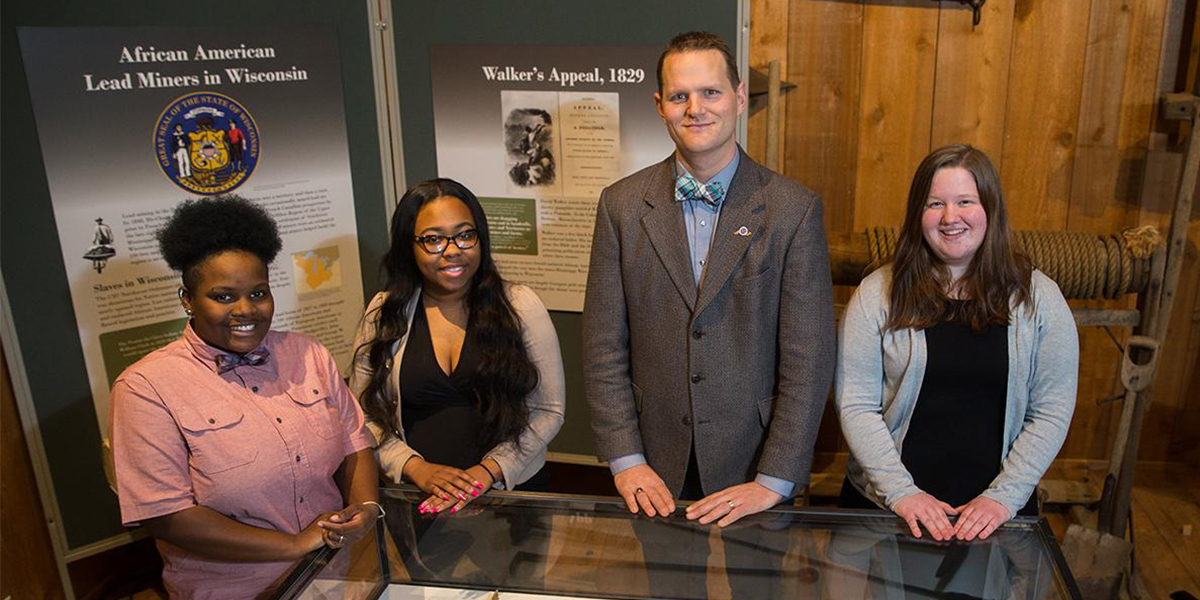
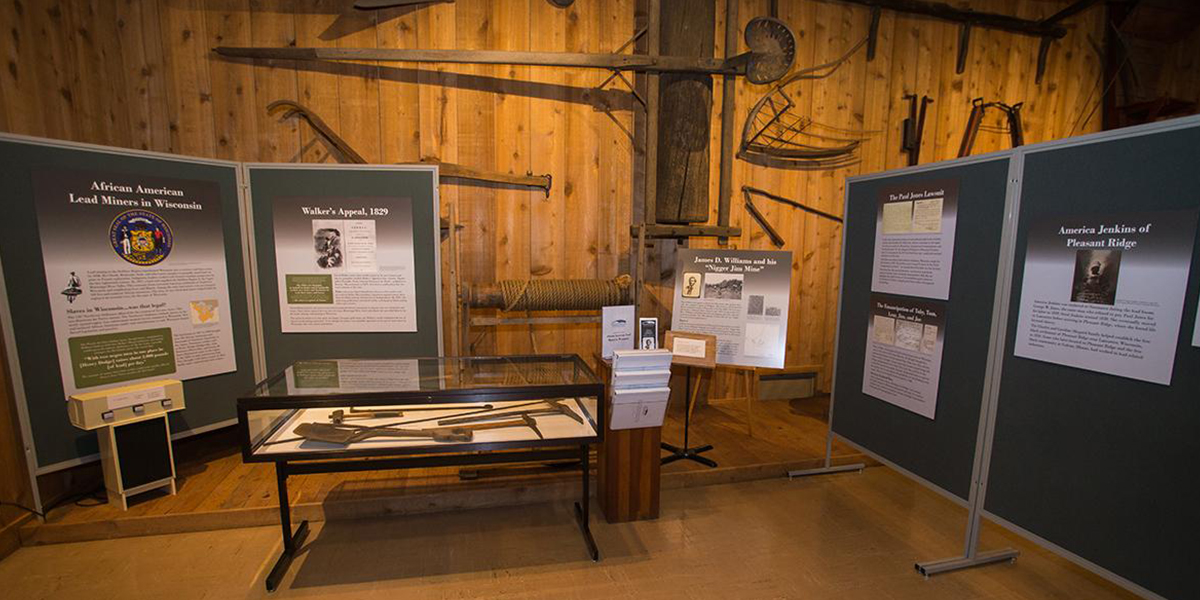
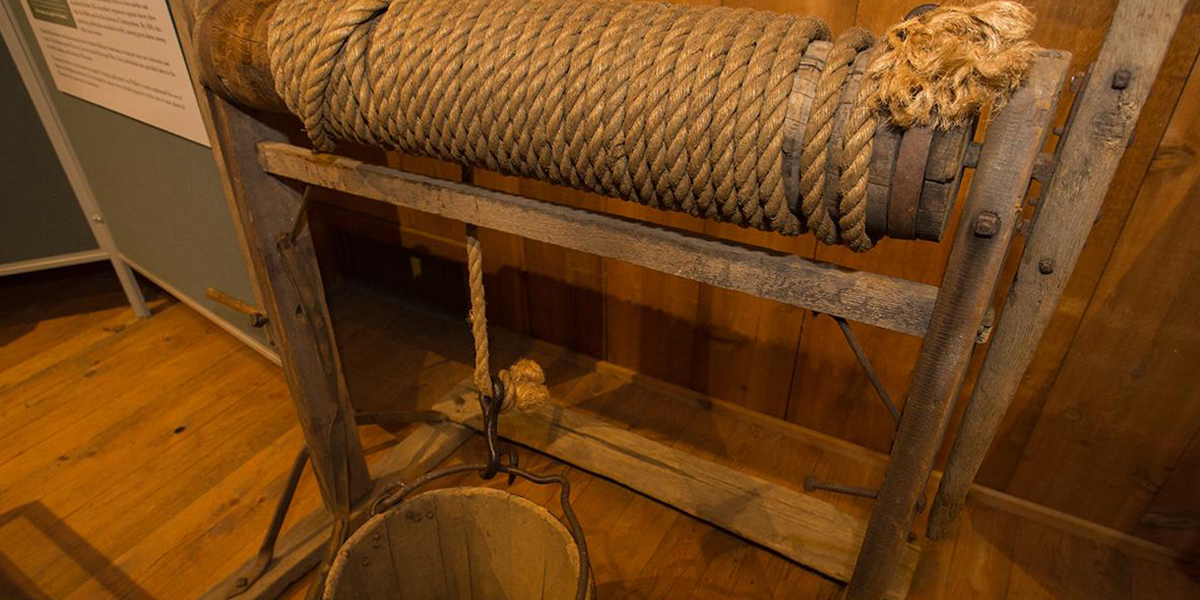
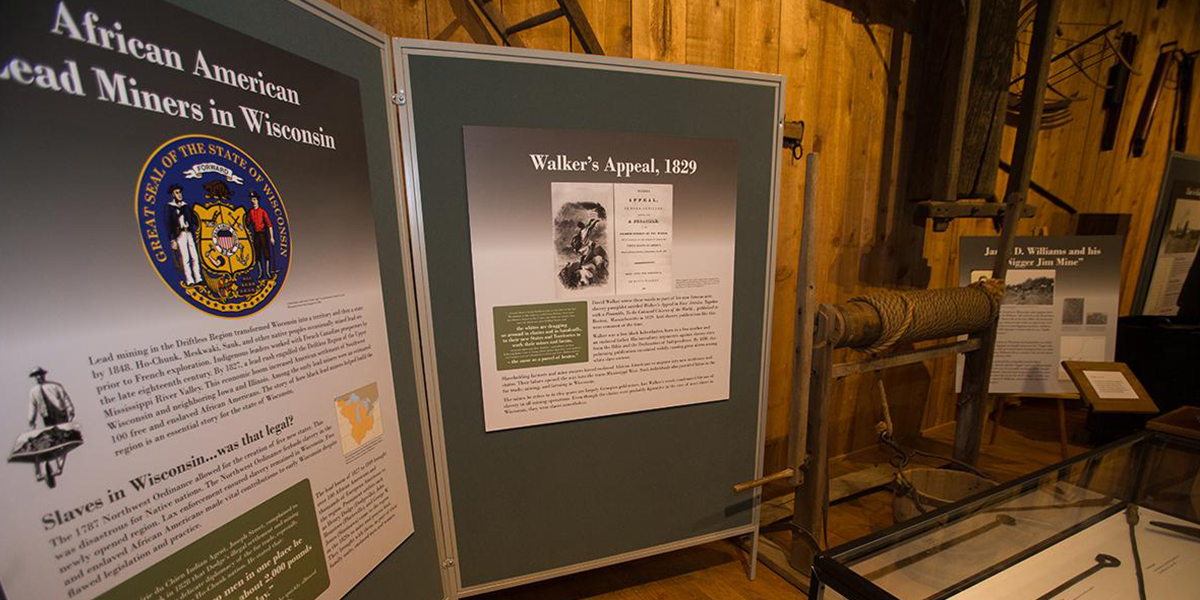
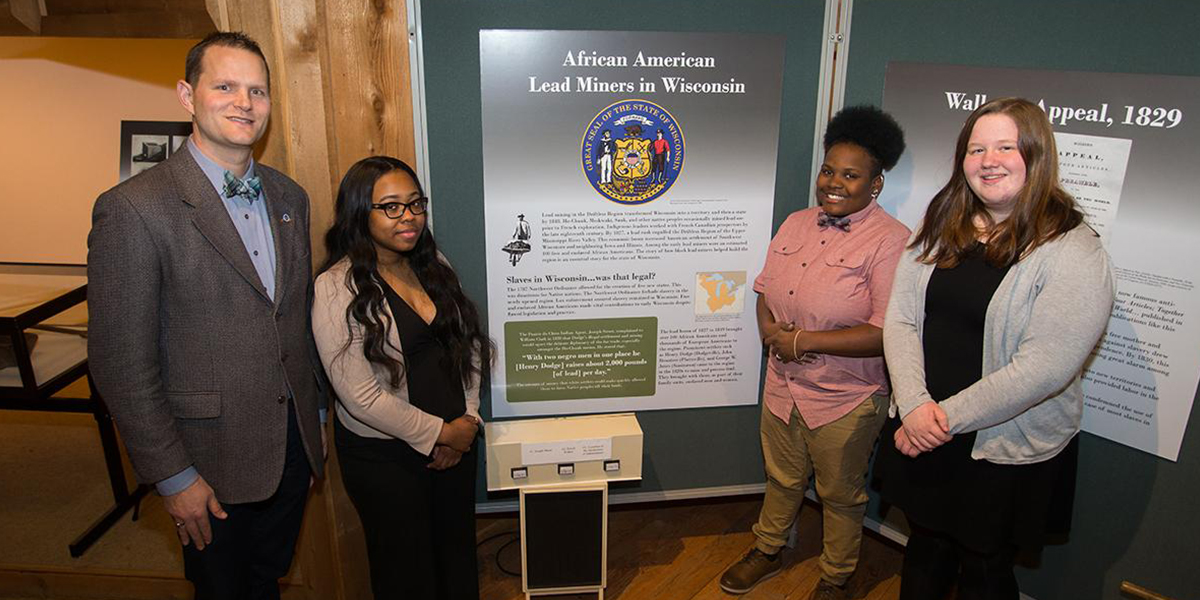
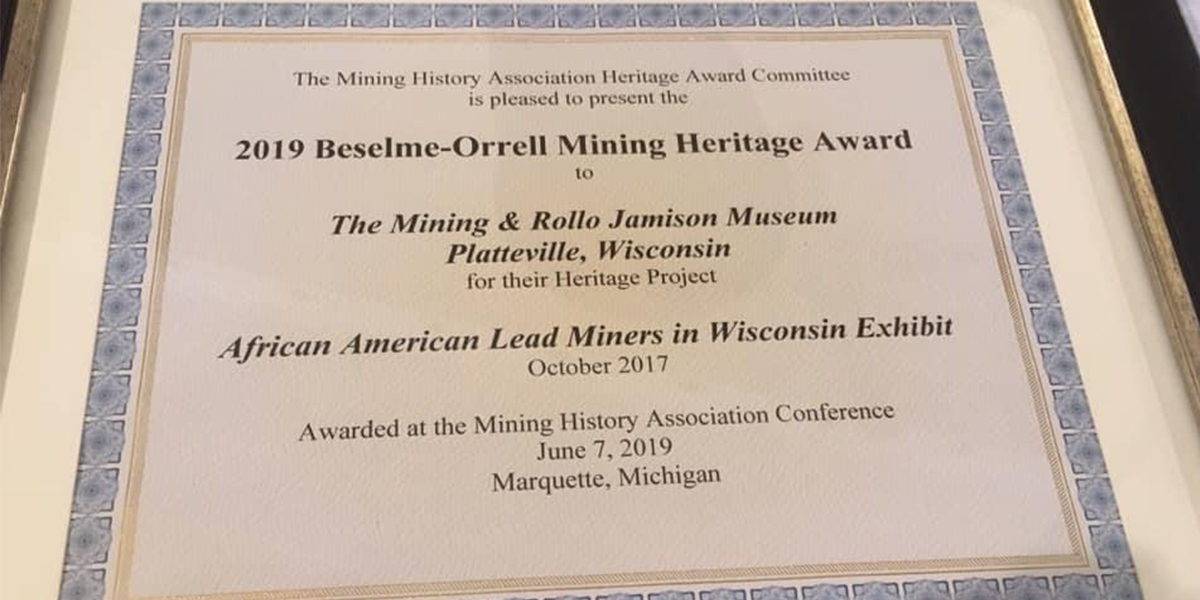
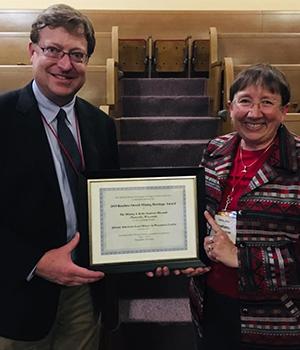 Social justice may not come to mind when one thinks of the lead mining boom of the Driftless Region of Wisconsin from 1826-1848. Yet, this is precisely what a University of Wisconsin-Platteville history class and staff did, through a special collaborative project with The Mining & Rollo Jamison Museums in Platteville.
Social justice may not come to mind when one thinks of the lead mining boom of the Driftless Region of Wisconsin from 1826-1848. Yet, this is precisely what a University of Wisconsin-Platteville history class and staff did, through a special collaborative project with The Mining & Rollo Jamison Museums in Platteville.
Beginning in January 2017, five students enrolled in the “African American Lead Miners, 1829-1890” course, taught by Dr. Eugene Tesdahl, assistant professor of history at UW-Platteville, conducted hands-on, archival history in the university’s Southwest Wisconsin Room and investigation in the field that brought to light the contributions and struggles of nearly 100 free and enslaved African American lead miners in southwest Wisconsin.
Upon completion of this initial research, Tesdahl and his students worked with the staff of The Mining & Rollo Jamison Museums to build and dedicate an exhibit on the topic. The collaborative project culminated in October 2017, when the exhibit “Free and Enslaved African American Lead Miners in Wisconsin” opened at the Museums.
On June 8, the importance of the exhibit was recognized when the Mining History Association presented the Museums with the 2019 Beselme-Orrell Mining Heritage Award for the exhibit at its annual conference in Marquette, Michigan.
The award recognizes “outstanding achievements which have demonstrably contributed to the understanding and appreciation” of mining heritage. Stephanie Saager-Bourrett, former museum curator, and Erik Flesch, museum director, accepted the award certificate and $1,000 check.
Tesdahl said the collaboration between The Mining & Rollo Jamison Museums and UW-Platteville’s Department of History is an important reminder of the positive power of community partnerships.
“In such collaborations, all benefit: local museums, our university students, the community and those in the past previously ignored,” he said. “The Mining & Rollo Jamison Museums and their staff deeply enrich the way our students can apply the lessons of history in a public history setting. We are eager to help them preserve and interpret the stories of lead mining and culture in the Driftless Region.”
Flesch agreed, adding, “Partnerships with UW-Platteville support our work to keep the museums a vital regional resource for lifelong learning in natural history, cultural history, and science and industry. The African American Lead Miners collaboration with Dr. Tesdahl and five fabulous history students demonstrates that the museums are not only a place where history is preserved, but also where the Driftless Region sense of place and the pioneering legacy of our people are shared with the next generation.”
Flesch noted that the exhibit is making an impact.
“As we welcome thousands of Wisconsin elementary school students to discover the exciting history of African American miners in Wisconsin’s pioneer history, we have found that bigotry and prejudice are not simply relicts of the past,” he said. “The exhibit invites museum visitors to confront the injustices of the past and draws attention to what it means to be black, miners and Wisconsinites.”
UW-Platteville students whose research inspired the exhibit included Tori Kosobucki, Simone Rand, Winnie Redfearn, Liz Larrison and Deja Roberson. The students, led by Tesdahl, presented their findings at local, regional and national conferences, including Research in the Rotunda in Madison, Wisconsin, and Posters on the Hill at the United States House of Representatives in Washington, D.C. in April 2018.
An article Tesdahl wrote, “Lead, Slavery and Black Personhood in Wisconsin,” which builds on the collaboration, was recently published in the Wisconsin Historical Society’s Wisconsin Magazine of History.